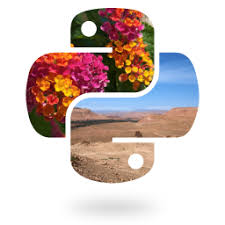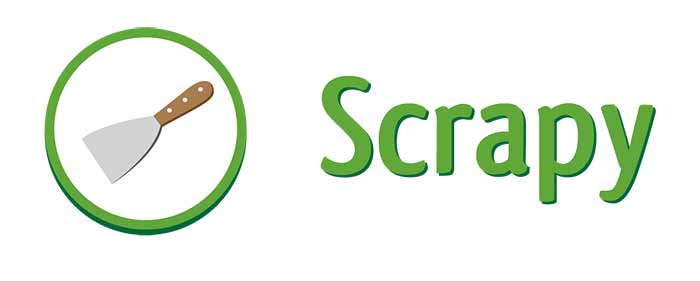Python as a programming language has many packages. However, many libraries are available for this interpreter programming language, high level and general purpose.
Among the elements of Python’s popularity, having an important set of libraries is a significant element. The more a programming language has a greater number of libraries and packages at its disposal, the more versatile the use will be.
Python libraries
In this article, we introduce ten of the top Python libraries. Remember that this list is based on the 2020 Python developer Statistics findings.

Requests
Primary goal: simplify HTTP requests
One of the most popular Python libraries is Requests, which aims to make HTTP easier and more user-friendly. Under the “Apache2” license and written in Python, Requests are under the “de facto” standard used by developers to build HTTP requests in Python.
In addition to using the Requests library to send HTTP requests to the server, it is possible to add data format, content, header, multi-part files and more … It also provides. With this library, developers do not need to add queries in the URL or encrypt POST data manually.
The Requests library transforms the complexity of building HTTP requests into a simple API so that developers can focus more on interacting with services.
The library supports Python version 2.7, 3.4 and higher versions and works well in PyPy.
Important notes:
- It is possible to upload multi-part files and download string files there.
- Automatic Content Encoding and decompressing automatically
- SSL verification by browser method
- Features can be personalized and optimized in accordance with the requirements.
- Continuity of communication
- Supports international domains and regions.

Pillow
Primary goal: manipulate images
Secondary objectives: archiving images, displaying images
Python video library or PIL “” is a free library that allows image processing in the python interpreter. In simpler terms, PIL allows you to manipulate images, open and save photo files in different formats in Python. Published by “Alex Clark” and colleagues, Pillow is an episode of the PIL library.
In addition to providing powerful image processing capabilities, Pillow offers an effective internal representation and extensive file format support. This Python library is provided to provide quick access to data stored in several major Pixel formats.
Important notes:
- Effective support for bugs using show method()
- Ideal for general processing applications
- Able to detect and read numerous file formats
- Support data conversion
- The histogram method allows the removal of some statistics from the image, which can be used to improve automatic contrast and analyze overall statistics.

Scrapy
Primary objective: extract data from the web
Secondary objectives: automated tests, data mining and web crawlers
Scrapy is a free and open-source Python framework widely used to extract data from the web and a number of other tasks including automated testing and data mining.
Initially, Scrapy was developed to extract data from the web, but it evolved over time to accomplish other purposes. The library offers a fast and high-level way to crawl websites and extract structured data from web pages.
Important notes:
- Writing a spider is convenient for crawling on websites and extracting data.
- Observes the principles of DRY (don’t Repeat Yourself).
- It offers a shell for the web crawler with which developers can test the behavior of the website.
- Supports issuing extracted data using the command line.
Asyncio
Initial goal: Multi-thread coding in Python
Many Python developers around the world use the asyncio library to write synchronous code using async / await syntax. In most cases, the asyncio library is ideal for IO and network code.
Asyncio is used to build various asynchronous frameworks in Python, which provide libraries for database connectivity, distributed task alignment, high-performance networking and web servers, and more. This library comes with a number of APIs.
Important points:
- Allows you to control sub-processes, distribute tasks through queuing, perform IO and IPC networking, and synchronize code simultaneously.
- Communicates between callback-based libraries and code with async / await syntax using low-level APIs.
- Comes with a suite of high-level APIs for simultaneous execution of Python input-output connection instructions and complete control over their execution.
- Makes it easy to work with asynchronous code.
- Support and management of various types of events
Tkinter
Initial goal: Development of graphical interface
Python provides an easy and fast way to build GUI applications when using Tkinter. Tkinter is a standard GUI library for the Python programming language that provides a powerful object-oriented user interface for the TK GUI tool.
Creating a GUI application using Tkinter is very easy. All you need to do is follow these simple steps:
- Import Tkinter first.
- Create the main window for your graphical interface.
- Add one or more Tkinter widgets.
- Enter the main event loop to do whatever the user needs to do.
Tkinter offers more than 15 types of widgets, including buttons, tags, and text boxes. Each of them has access to a number of specific geometric management methods that aim to organize widgets through the parent widget (main).
Important points:
- Comes with a set of widgets that support geometric management methods.
- Facilitates the development of GUI applications.
- Supports an effective object-oriented user interface.
Six
Initial Objective: Library compatibility (covers differences between Python 2 and 3)
Despite its simplicity, Six is a powerful Python library created to resolve differences between Python versions 2 and 3. Six was created to support code that can run on both Python 2 and Python 3 without the need for an editor.
Six libraries are very easy to use thanks to the fact that they are provided as a single Python file. So copying a library into a Python project is ridiculously simple. The reason for naming it (Six) was actually multiplying Python 2 by 3.
Important points:
- It has simple functions for making Python code compatible with Python versions 2 and 3.
- Supports all later versions of Python 2.6.
- It is very easy to use because it is presented in a separate Python file.

aiohttp
Primary objective: plays a client or server related to asynchronous HTTP.
Another simple but widely used Python library is aiohttp, which is essentially created to be a client or server related to asynchronous HTTP in Python, and also supports WebSockets.
Important notes:
It offers a server that has many capabilities.
Provides WebSockets support.
It supports both client and server related to HTTP.

Pygame
Primary goal: two-dimensional game development
Secondary objective: development of multimedia applications
Pygame is a free and open source Python library developed for multimedia applications in Python, especially two-dimensional game projects. Therefore, both ordinary developers and professionals use it extensively.
In fact, Pygame uses the SDL library (Simple DirectMedia Layer). Like the SDL library, Pygame is a portable library and therefore supports a large number of platforms and platforms.
It is possible to transfer applications developed with Pygame to Android devices such as smartphones and tablets. Pgs4a should be used for this purpose.
Important notes:
- Does not require openGL.
- Makes it easy to use multicore CPUs.
- There is no need for any GUI to use all available functions.
- It supports a large number of platforms and platforms.
- Its use is simple and convenient.
- It uses assembly code and optimized C code to execute the main functions.

Kivy
Primary objective: application development (with innovative user interface)
To build mobile applications and multi-touch applications with a NUI (native interface); Python developers are dependent on the Kivy library. This free and open source Python library is licensed under MIT and runs on Android, iOS, Linux, macOS and windows.
In fact, the. Kivy the evolution of the project PyMT, which includes all the elements essential for making an application intuitive چندلمسی is that the graphics library, say, and a lot of the widget is feature چندلمسی also support, a language interface (KV) and support a wide range of input there.
KV or Kivy language is an interface language used to describe interaction and user interface. Making a complete UI and adding communication to it using Kivy is very simple. Kivy also supports Raspberry Pi.
Important notes:
- It is possible to use natively from most devices, inputs and protocols.
- Multi-platform, runs on different platforms
- Supports more than 20 extensible widgets.
- It supports the graphics engine built into OpenGL ES 2.

Bokeh
Primary objective: developing applications based on visualization
Secondary objectives: data visualization, data science
It is an interactive visual library for the Python programming language, allowing data to be viewed in a beautiful and meaningful way in web browsers at the same time. The library makes it easy to visualize data, build dashboards, data applications, and interactive maps.
In addition to providing a concise and beautiful structure of diverse graphics, the bokeh library expands its ability to interact high-level on very large data sets.
Important notes:
- Makes it possible to create complex statistical maps with simple commands.
- Bokeh visualization can be easily placed in the most popular
- Python frameworks, Django and Flask.
- Ability to generate beautiful and interactive visual data
Various output formats
Final word
It was from 10 famous and popular Python libraries. In keeping with the progress and popularity of the Python programming language, these libraries are regularly updated and upgraded.
Familiarity with these public libraries will help you progress in Python and make you a better developer.